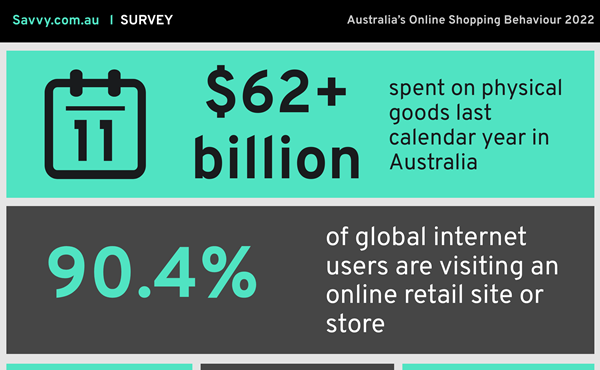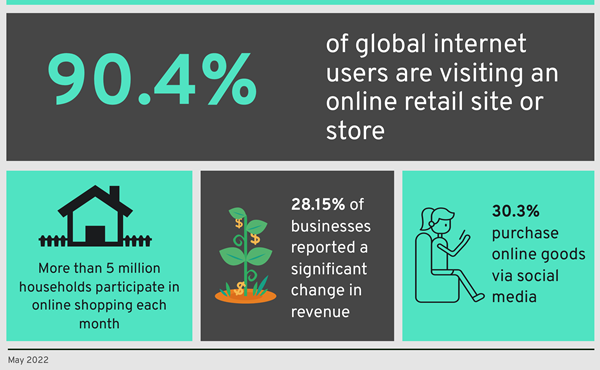In September 2021, Australia had an online retail turnover of over $4 million and throughout the calendar year, Australians spent a record of $62.3 billion on physical goods, with homewares and appliances accounting for 23.8 per cent, according to Savvy’s Online Shopping Behaviour Report.
Since the pandemic, which saw consumers spending further online to stave off boredom, the growth of online retail has been turbocharged as foot traffic becomes web traffic.
While Covid-19 changed the way consumers shop, the post-pandemic shift still indicates online shopping participation will remain strong well into the future.
The market size of the online shopping industry has grown 19.6 per cent on average over the last five years between 2017 and 2022 and experts say significant growth is expected to still come for the Australian market.
“Although this year is predicted to be more stable with slower growth rates than the last two years, the opportunities for retailers are far from over,” states the report.
Compared to the rest of the world though, we are still lagging behind in terms of expenditure and purchase frequency, despite the increase in Australia’s overall online spending.
At the beginning of the pandemic, retail restrictions and fear of catching Covid-19 were driving consumers online. These drivers have now been replaced by convenience, greater access to products and value for money.

Australian households are buying online more often. Compared to 2019, there has been a 73 per cent growth rate on a year-to-year basis.
The downside to this is a lot of retailers have been forced to shut up shop. It does not mean physical stores will completely disappear in the future—consumers still want the luxury to shop wherever and whenever—but shopping centres have certainly felt the pinch of lower foot traffic over the last two years.
Variety stores saw the largest shift in online sales last year at 74.1 per cent. This was closely followed by food and liquor (69.5 per cent) and home and garden (61.2 per cent).
Over eight in 10 Australians now care about environmental sustainability. On top of that, three in four consider some element of sustainability when shopping. As packaging is the first thing people see when they buy online, it is important it uses eco-friendly materials and is practical and purposeful. Otherwise, retailers can easily lose loyal customers.
As consumers become more conscious, brands should make sustainability core to their businesses to cater for the shift.
Other expectations online retailers believe consumers will want over the next 12 months include an increase in delivery speed (46.67 per cent), customer service (34.07 per cent) and price (25.19 per cent).
Retail businesses are making the most of social media as part of their selling strategy. As a result, 57.78 per cent of retailers use Facebook for online sales, 54.81 per cent are on Instagram to help sell their products online, while 25.93 per cent are on LinkedIn. With good reason too, as over 30 per cent of Australians have purchased online goods via social media in the last 12 months.

“These figures present existing possibilities for online retailers to achieve a high level of sales, as well as find new ways to build trust, loyalty and a sense of community with customers. It goes without saying that in 2022, customer retention has never been more essential.
“In order to remain competitive, retailers should focus on stronger ways to keep their customers engaged and provide them with a better shopping experience through free shipping incentives and instant order status notifications.”







